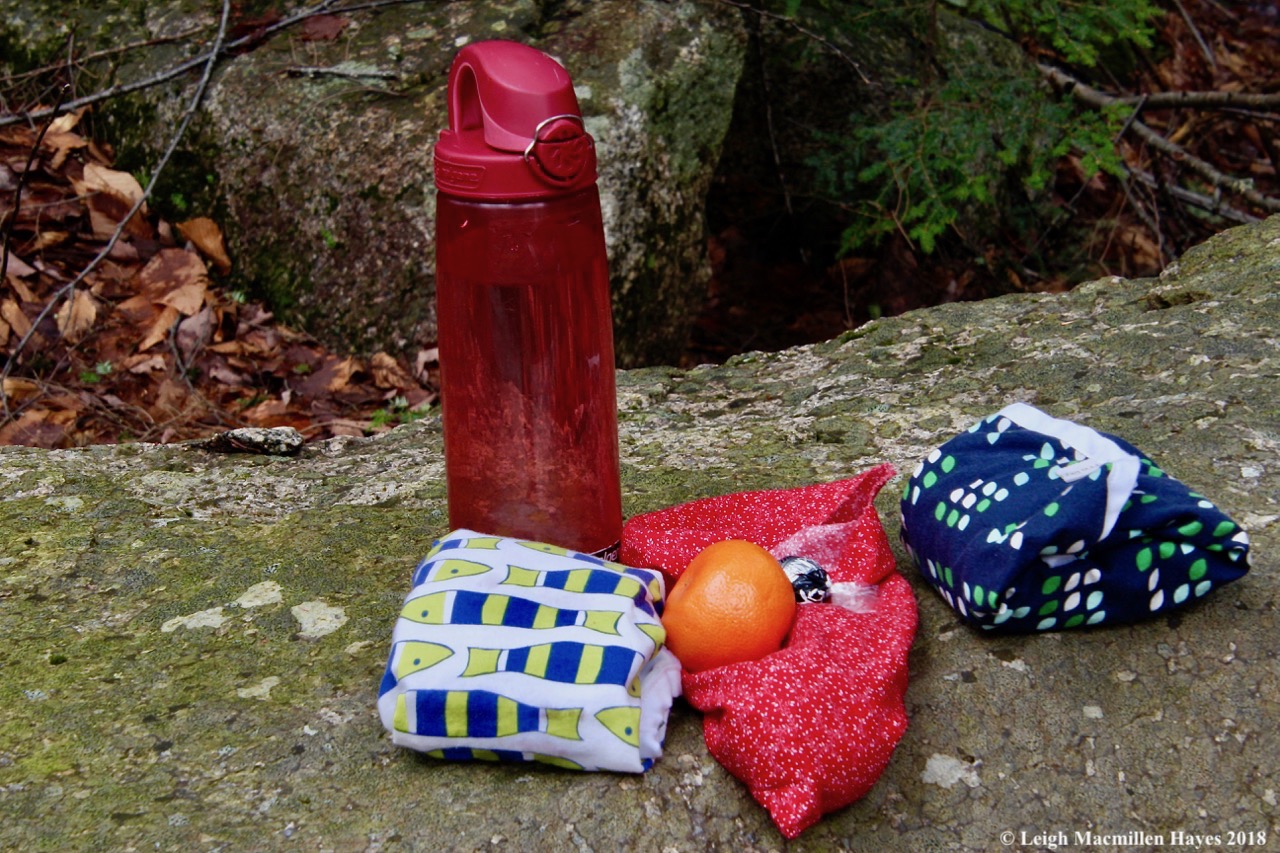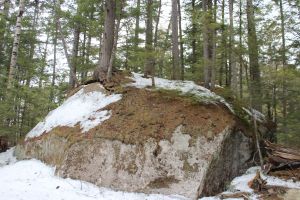Our journey began with a couple of detours this morning as a friend and I made our way to a particular trailhead in New Hampshire.

First there were the birds along the old course of the Saco River to listen to and welcome home including Red-winged Blackbirds and Canada Geese.
Then there were some friends in New Hampshire to surprise with a quick visit.

Finally, however, we parked on the side of the road knowing that because we couldn’t drive to the trailhead, we’d have to walk along the snowmobile trail all the way in. That was fine with us for as the sign instructed, we took it slow. (And saw only two snowmobiles during the entire journey even though it was a super highway of sorts–apparently that particular season is also slowing down.)

There were artist’s conk fungi to admire for the white pore surface that invites those who sketch to do so.

After that find, we followed raccoon prints until they literally disappeared into midair. Well, maybe up a tree.

In the brook beyond, we found spring whispering her sweet songs as she enticed us with reflections of a season to come.

And then it was more artist’s conks that garnered our attention for their juxtaposition within a hemlock’s hollow center.

They numbered many on the trunk’s outside as well and presented themselves as stepping stones . . . perhaps for a squirrel.

And at least one small rodent had dined, probably on more than one occasion.

We took advantage of the feast as well as we focused our cameras on every possible angle.

Further along, we spent time following bobcat and moose tracks, but each time eventually finding our way back to the trail, where a fungus of another kind begged our attention.

By its youthful presentation, the common name doesn’t always make sense.

But its mature structure certainly does: Red-Belted for the upper surface.

And Polypore for the lower, so named for the many pores on the underside.

Bobcat and moose tracks soon led us to another site where bark had been scaled off a hemlock by either a woodpecker or nuthatch. Their search was for insect larvae. My search was for scat, but I found none and hoped they were more successful.

The cool thing about this if I’m interpreting it correctly, is that I could see lines where the bird’s beak had worked hard to remove each bark scale.

Behind the tree, those moose tracks I spoke of again captured our focus.

And we noted where it had browsed upon the buds of a maple. It appeared that the large mammal’s spit had frozen after it used its lower incisors to rip the buds off the tip of a twig and even left a “flag,” but really, it was probably a bit of sap. Still, I love the thought of the animal’s spit left behind.

Three hours later, and more than four miles for so wandering was our manner, we reached the trailhead we sought.

Because we’d gone slow as the sign early on had encouraged us, we tried to beeline to reach a certain pond before the sun set. Thankfully, as we approached the pond at last, another sign again encouraged us to go forth slowly. And so we did.

And we were rewarded–with a bluebird sky and view of Mount Shaw and the pond. For a few moments we stood still and took in the scene and wondered. And wanted to cross, but knew conditions might not be as pristine as they looked. It would be a long way out with wet feet.

Beside us was the dam and outlet.

It formed the headwaters for a brook bearing the pond’s name, which flows beside our friends’ home.

As we hiked back down the trail, we again beelined, but occasionally gave ourselves permission to pause. Sometimes it was to enjoy the little things such as Hobblebush flower and leaf buds readying for a future display.
Other times it was to listen: to the birds; but also to the million wild animals we swore we heard, and sometimes even sniffed, but never actually spied. They were there. We were certain of that.

As long shadows cast across our path, we made our way back, and then deviated a bit from our journey in, heading out to the paved road in a more direct line than we’d started. Pam suggested we might see other things.

She was correct. Back on the pavement, we had to walk a wee bit up South Chatham Road to my truck for we’d gone in via Week’s Brook Trail and then crossed over to Peaked Hill Road via the snowmobile trail and totally missed this sign.
Chat-HAM as it’s pronounced for H-A-M spells ham, is the site of Province Brook and Pond, and the Province Brook Trail. It’s also a mighty proud town–with a population of 300.
The sign made us smile and we gave great thanks for taking the time to read it and for the opportunity to travel over nine miles in this wee province of New Hampshire.



























































You must be logged in to post a comment.